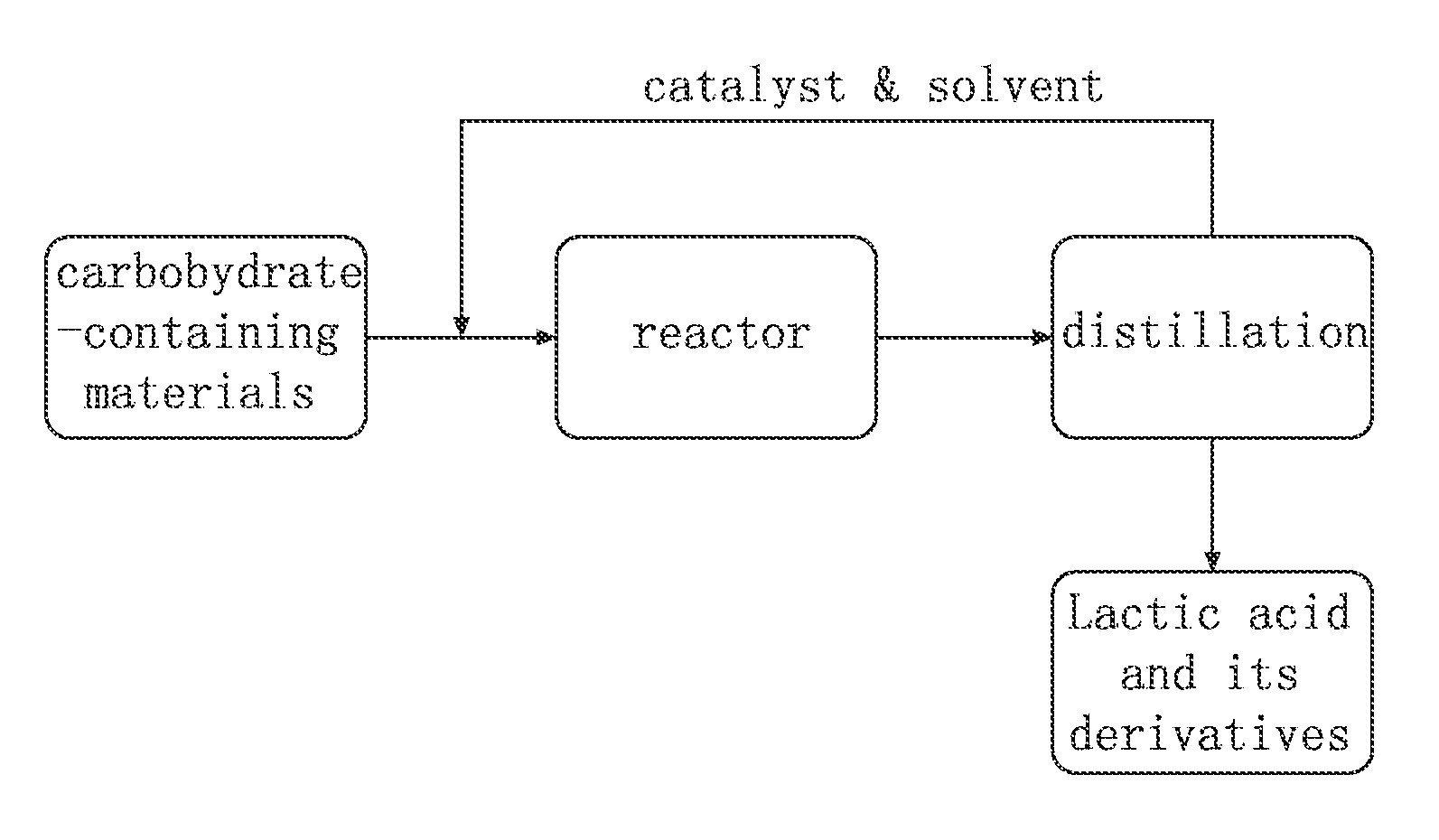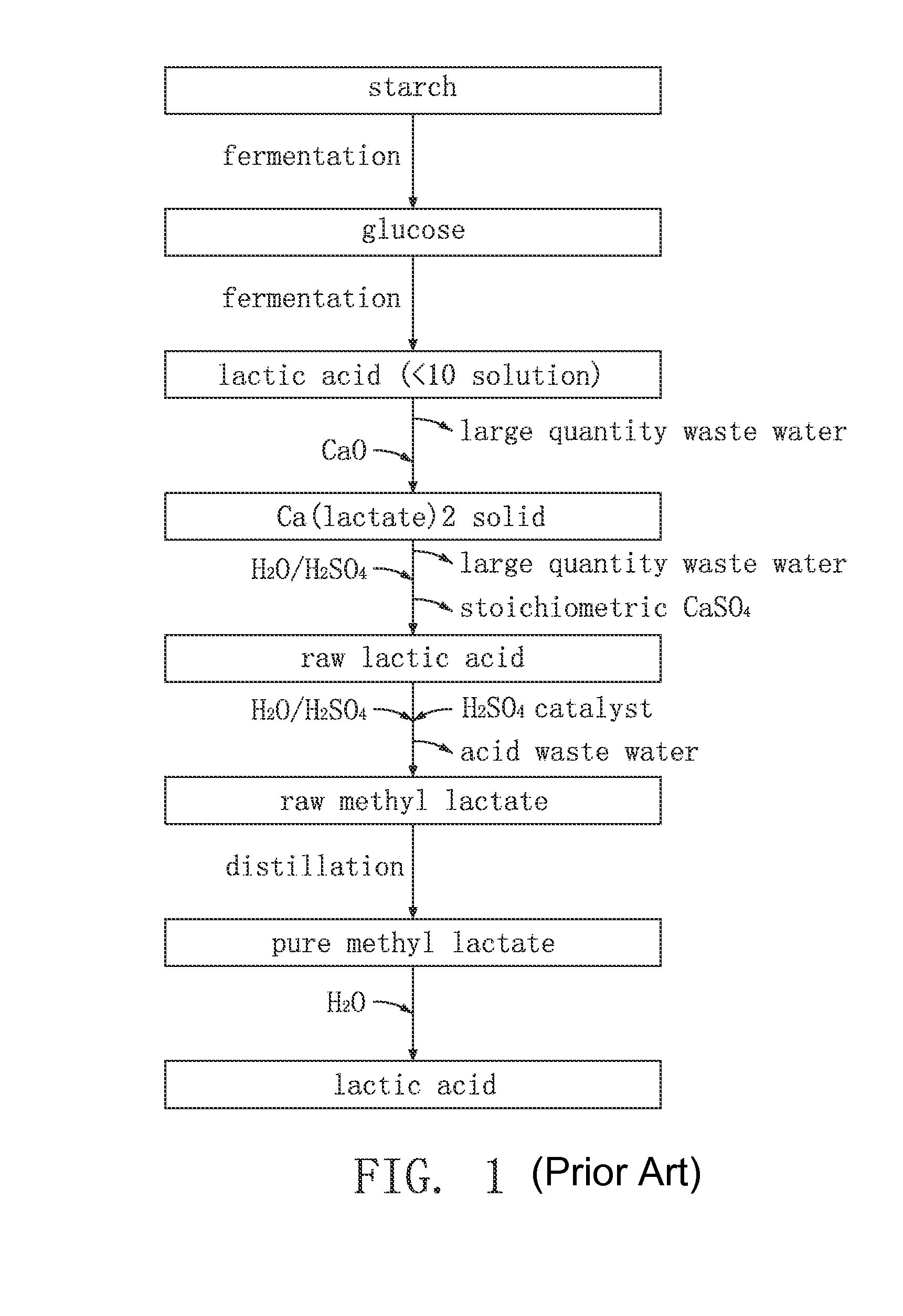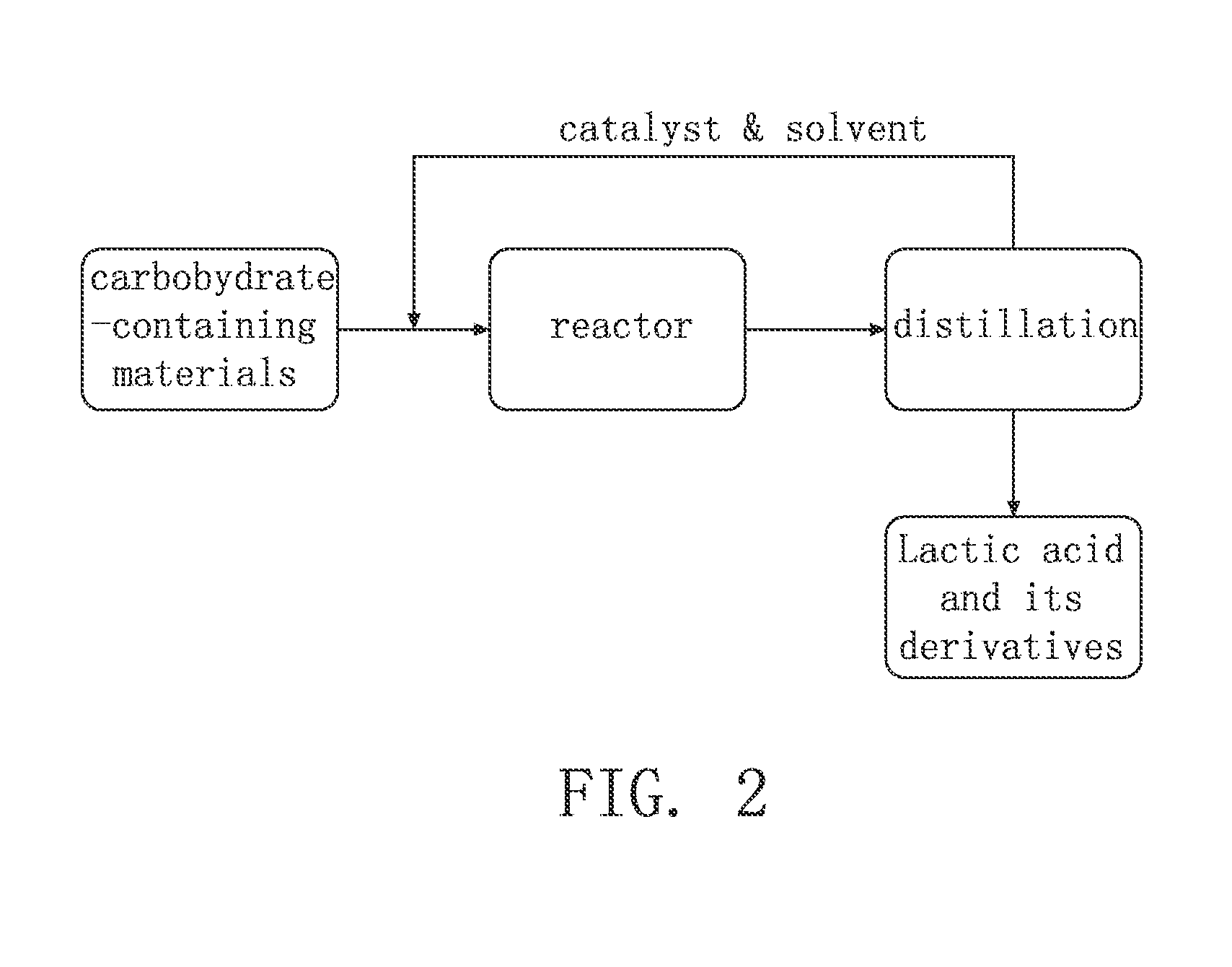Method for Synthesis of Lactic Acid and Its Derivatives
a technology of lactic acid and derivatives, which is applied in the preparation of carboxylic compounds, physical/chemical process catalysts, stannic chloride, etc., can solve the problems of low product concentration, long reaction time, low reaction rate, etc., and achieves the improvement of the effect of improving the utilization rate of carbohydrate-containing raw materials and simplifying the steps
- Summary
- Abstract
- Description
- Claims
- Application Information
AI Technical Summary
Benefits of technology
Problems solved by technology
Method used
Image
Examples
example 1
[0030]In the reaction, 100.0 g of SnCl2.2H2O and 163.0 g of MgCl2.6H2O were added into a reactor (inside volume 10.0 L) as catalyst. Then 3.050 kg of methanol was added into the reactor, and the reactor was sealed and heated to 130° C. under stirring. 511.0 g of water and 500.0 g of sucrose were mixed to obtain a solution, which was pumped into the reactor with a flow of 8.0 mL / min to carry out the reaction. After pumping all of the sucrose aqueous solution, continue more 1.5 hours at 130° C. to complete the reaction. The product was analyzed by gas chromatograph with thermal conductivity detector (GC-TCD) and high-performance liquid chromatography (HPLC). The yield of methyl lactate is 53% and the yield of lactic acid is 33%.
example 2
[0031]In the reaction, 100.0 g of SnCl2.2H2O and 163.0 g of MgCl2.6H2O were added into a reactor (inside volume 10.0 L) as catalyst. Then 3.005 kg of methanol was added into the reactor, and the reactor was sealed and heated to 120° C. under stirring. 511.0 g of water and 500.0 g of sucrose were mixed to obtain a solution, which was pumped into the reactor with a flow of 8.0 mL / min to carry out the reaction. After pumping all of the sucrose aqueous solution, continue more 1.5 hours at 120° C. to complete the reaction. The product was analyzed by GC-TCD and HPLC. The yield of methyl lactate is 51% and the yield of lactic acid is 39%.
example 3
[0032]In the reaction, 100.7 g of SnCl2.2H2O and 162.8 g of MgCl2.6H2O were added into a reactor (inside volume 10.0 L) as catalyst. Then 2.998 kg of methanol was added into the reactor, and the reactor was sealed and heated to 130° C. under stirring. 500.0 g of water and 500.0 g of sucrose were mixed to obtain a solution, which was pumped into the reactor with a flow of 8.0 mL / min to carry out the reaction. After pumping all of the sucrose aqueous solution, continue more 0.5 hours at 130° C. to complete the reaction. The product was analyzed by GC-TCD and HPLC. The yield of methyl lactate is 57% and the yield of lactic acid is 29%.
PUM
| Property | Measurement | Unit |
|---|---|---|
| reaction temperature | aaaaa | aaaaa |
| reaction temperature | aaaaa | aaaaa |
| temperature | aaaaa | aaaaa |
Abstract
Description
Claims
Application Information
 Login to View More
Login to View More - R&D
- Intellectual Property
- Life Sciences
- Materials
- Tech Scout
- Unparalleled Data Quality
- Higher Quality Content
- 60% Fewer Hallucinations
Browse by: Latest US Patents, China's latest patents, Technical Efficacy Thesaurus, Application Domain, Technology Topic, Popular Technical Reports.
© 2025 PatSnap. All rights reserved.Legal|Privacy policy|Modern Slavery Act Transparency Statement|Sitemap|About US| Contact US: help@patsnap.com



